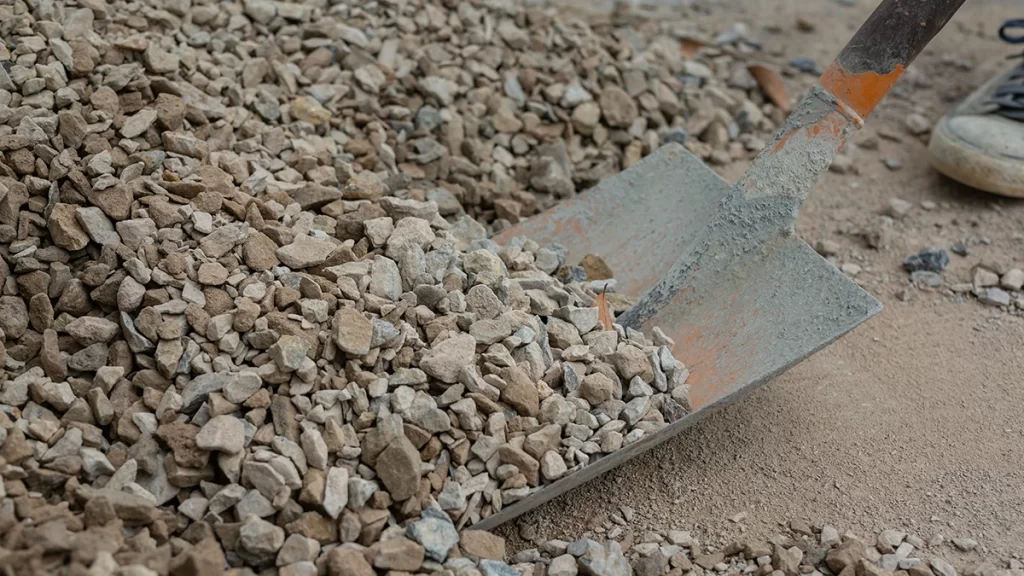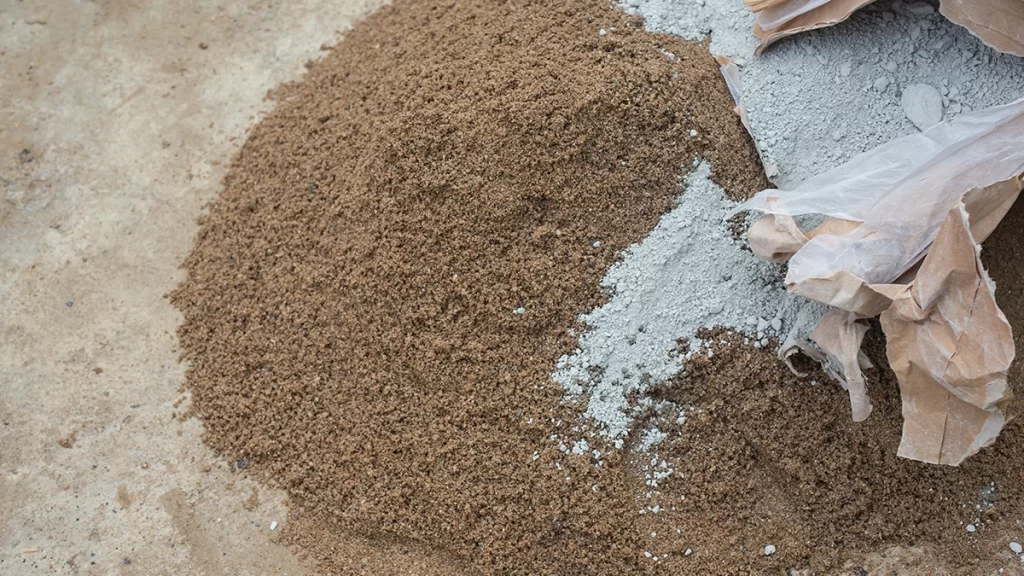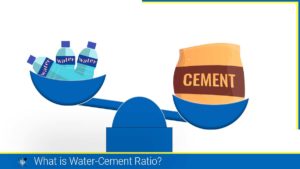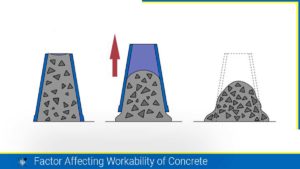The process of making concrete involves mixing various materials in specific proportions to achieve the desired properties. There are two types of concrete mixing techniques – Conventional nominal mix and Mix design, which are used to accomplish specific goals. This article is specifically about concrete mix design, principles, design requirements and factors affecting mix design.
What is Concrete Mix Design?
Concrete mix design is centred on the rational proportioning of ingredients to achieve the desired properties in both the plastic and hardened states. The plastic state of concrete must be satisfactory to allow for proper compaction, which in turn affects the performance of the hardened concrete and the structure as a whole. Workability governs the ease of placement while the water-cement ratio primarily affects durability, making these factors crucial in proportioning.
The ultimate goal of the mix design is to determine the most suitable proportions of materials to meet the specific requirements of the structure. According to IS 456: 2000, the design mix of concrete is the process of selecting the suitable ingredients of concrete and determining their relative proportions with the objective of producing concrete of the required, strength, durability, and workability as economically as possible.
The design mix is determined through trial mixes and tests on the materials used in the concrete. The proportion of ingredients is adjusted until the desired properties of the concrete are achieved. The mix design is usually expressed in terms of the proportions of the materials by weight per cubic meter of concrete.

Principal of Mix Design
The Principles of Proportioning: When proportioning concrete or mortar mixes, the primary aim is to produce a durable material that meets the necessary requirements for strength, water tightness, and other essential properties while keeping the cost as low as possible. To attain these goals, a meticulous selection process must be employed when choosing the cement, aggregate, and water, taking into account the following factors:
- It is important for the mix to be easily workable to facilitate placement and finishing without excessive effort.
- As cement tends to be the most expensive component of the mix, the proportion used should be minimized while still achieving the desired properties.
Design Requirement
To begin with, for the design of a concrete mix the following information should be collected:
- Grade of concrete: Concrete grade is indicated by the designations M20 and M25, which represent the characteristic strength, fck, of 20 N/mm2 and 25 N/mm2, respectively. The standard deviation is determined based on the level of control that is required on-site.
- Type of cement: The grade of Ordinary Portland Cement (OPC) such as 33, 43, or 53 grade. Portland Pozzolana Cement (PPC) to relevant IS specifications.
- Type and size of aggregate: Natural sand, crushed stone, gravel etc. conforming to IS:383–1970, quoting the source of supply.
- Nominal maximum size aggregate (MSA): 40 mm, 20 mm, 10 mm, as per IS:383–1970.
- Maximum/minimum cement content (kg/m3): This is required for durability/considerations.
- Type of mixing and curing water: Whether fresh potable water, seawater, or groundwater is to be used.
- Water-cement ratio by weight: This is required for considerations of strength and/or durability for different exposures and to meet appearance and other requirements.
- Degree of workability of concrete: This is dependent on placing and compaction conditions.
- Air content: This is inclusive of entrained air.
- Type of admixture used.
- Maximum/ minimum density of concrete.
- Maximum/minimum temperature of fresh concrete.
Also, read: Factor Affecting Workability of Concrete
Ingredients For Mix Design
Cement: The cement used should have a minimum compressive strength at different ages according to the relevant specification.
Aggregate: The size of the aggregate, particle shape, colour, surface texture, density (heavyweight or lightweight), and impurities, all of which have an influence on the durability of concrete, should conform to IS: 383–1970.

Water: Water is required primarily for the hydration of cement and to give fluidity to the plastic mass. Water should be clean and free from impurities.
Admixture: After considering the specific properties that an admixture can add to concrete, an appropriate selection can be made, and the manufacturer’s instructions for its proper usage can be followed. Indian standard for admixtures is IS: 9103.
Concrete is essentially a mixture of cement, water, coarse and fine aggregates which consolidates into a hard mass due to a chemical reaction between cement and water.
Also, read: Fine Aggregate for Concrete: 3 Classification, Properties and Characteristics

Acceptance Criteria
The acceptance criteria for concrete in accordance with IS: 456-2000 are as follows.
Criteria 1
Every sample shall have a test strength not less than the characteristic strength, fck or if the test strength of one or more samples is less than the characteristic strength, each case should not be less than the greater of
- fck1-.35 \( \sigma \)
- 0.8fck
and the average strength fav of all samples should not be less than
\( f_{ck}+\left(1.65-\frac{1.65}{\sqrt n}\right)\sigma \)
where,
\( \sigma \)=standard deviation
\( n \)= cumulative number of samples tested till date
Criteria 2
Concrete is taken as not complying with strength requirements if: the strength of any sample is less than the greater of
- fck1-.35 \( \sigma \)
- 0.8fck
and the average strength fav of all samples should not be less than
\( f_{ck}+\left(1.65-\frac3{\sqrt n}\right)\sigma \)
Planning for Mix Design
Effective planning of mix design is crucial to avoid significant delays that can result from assessing the 28-day strength of cement in the laboratory before obtaining the 28-day compressive strength of concrete and conducting trial mixes. In practical situations, the 28-day strength of cement can be approximated based on the grade of cement (33, 43, or 53 grade) and its specified strength. Additionally, to minimize this time lag even further, the 28-day compressive strength of concrete may be estimated from the 7-day strength by utilizing a general relationship between the two strengths, which may vary based on factors such as the chemical composition of the cement type, the quality of the aggregates, and the aggregate-cement ratio.
Sample procedure to determine Design Mix for M25
The following are the factors that affect mix design for concrete:
- Compressive Strength requirement: The strength requirement of the concrete depends on the type of structure and its intended use. The strength of the concrete is determined by the compressive strength of the concrete at a specified age. Therefore, the required strength will determine the mixed design and the materials to be used.
- Workability requirement: The workability of the concrete is the ease with which it can be mixed, transported, placed, and compacted. The workability requirement depends on the nature of the construction and the placement method. The mixed design needs to be adjusted to provide the desired workability.
- Type of aggregates: The type and quality of aggregates used in the mix will affect the strength, workability, and durability of the concrete. The mix design needs to be adjusted to accommodate the specific properties of the aggregates used.
- Type of cement: The type and quality of cement used in the mix will affect the strength and durability of the concrete. The mix design needs to be adjusted to accommodate the specific properties of the cement used.
- Water-cement ratio: The water-cement ratio is the ratio of the weight of water to the weight of cement in the mix. It affects the strength, workability, and durability of the concrete. The mix design needs to be adjusted to provide the required water-cement ratio.
- Admixtures: Admixtures are added to the mix to improve the workability, durability, and other properties of the concrete. The mix design needs to be adjusted to accommodate the specific admixtures used.
- Environmental factors: The temperature and humidity of the environment where the concrete will be placed can affect the setting time and strength development of the concrete. The mix design needs to be adjusted to accommodate specific environmental conditions.
Factors Affecting Mix Design
The mix design of M25 grade concrete is a mix proportion of the various materials in the concrete that will result in achieving a target compressive strength of 25 megapascals (MPa) after 28 days of curing. The design mix for M25 concrete is based on the following considerations:
- Target strength: The target strength for M25 concrete is 25 MPa. This strength is based on the structural design requirements and is specified by the structural engineer.
- Water-cement ratio: The water-cement ratio is an important factor in the design mix as it affects the workability and strength of the concrete. For M25 concrete, the maximum water-cement ratio is 0.5.
- Cement content: The amount of cement used in the design mix depends on the water-cement ratio and the target strength. For M25 concrete, the minimum cement content is 300 kg/m3.
- Fine aggregate: The fine aggregate used in the mix should be well-graded and free from impurities. For M25 concrete, the maximum size of the fine aggregate is 10 mm.
- Coarse aggregate: The coarse aggregate used in the mix should be of good quality, durable and free from impurities. For M25 concrete, the maximum size of the coarse aggregate is 20 mm.
Also, read: What is The Water-Cement Ratio?: Calculation and Value of Water Cement Ratio.
FAQs:
Q: What is a design mix?
Answer: Design mix is the process of determining the proportions of cement, water, aggregates, and admixtures required to produce concrete with the desired strength, workability, and durability.
Q: What factors affect the design mix for concrete?
Answer: The factors that affect the design mix for concrete include the required strength, workability, and durability of the concrete, type of aggregates and cement, water-cement ratio, and environmental factors.
Q: What is the process of designing a concrete mix?
Answer: The process of designing a concrete mix involves selecting the appropriate mix design method, determining the target strength and workability of the concrete, selecting the materials, determining the water-cement ratio, and adjusting the mix proportions based on trial batches and testing.
Q: What is the purpose of conducting trial mixes?
Answer: The purpose of conducting trial mixes is to determine the optimum mix design that meets the required strength, workability, and durability requirements. Trial mixes involve adjusting the mix proportions, testing the concrete, and making any necessary modifications to achieve the desired properties of the concrete.
Q: What is the role of admixtures in concrete mix design?
Answer: Admixtures are added to the concrete mix to improve the workability, durability, and other properties of the concrete. The role of admixtures in concrete mix design is to enhance the performance of the concrete in specific ways, such as reducing the water content or enhancing the strength.
References:
- Indian Standard. (2009). Concrete mix proportioning – guidelines (first revision) (IS 10262:2009). Bureau of Indian Standards.
- Indian Standard. (2000). Plain and reinforced concrete – code of practice (IS 456:2000). Bureau of Indian Standards.
- Duggal, S.K. (2008). Building material. New Age International (P) Ltd., Publishers
- American Concrete Institute. (Year). Standard practice for selecting proportions for normal, heavyweight, and mass concrete (ACI 211.1). ACI.
![]()







